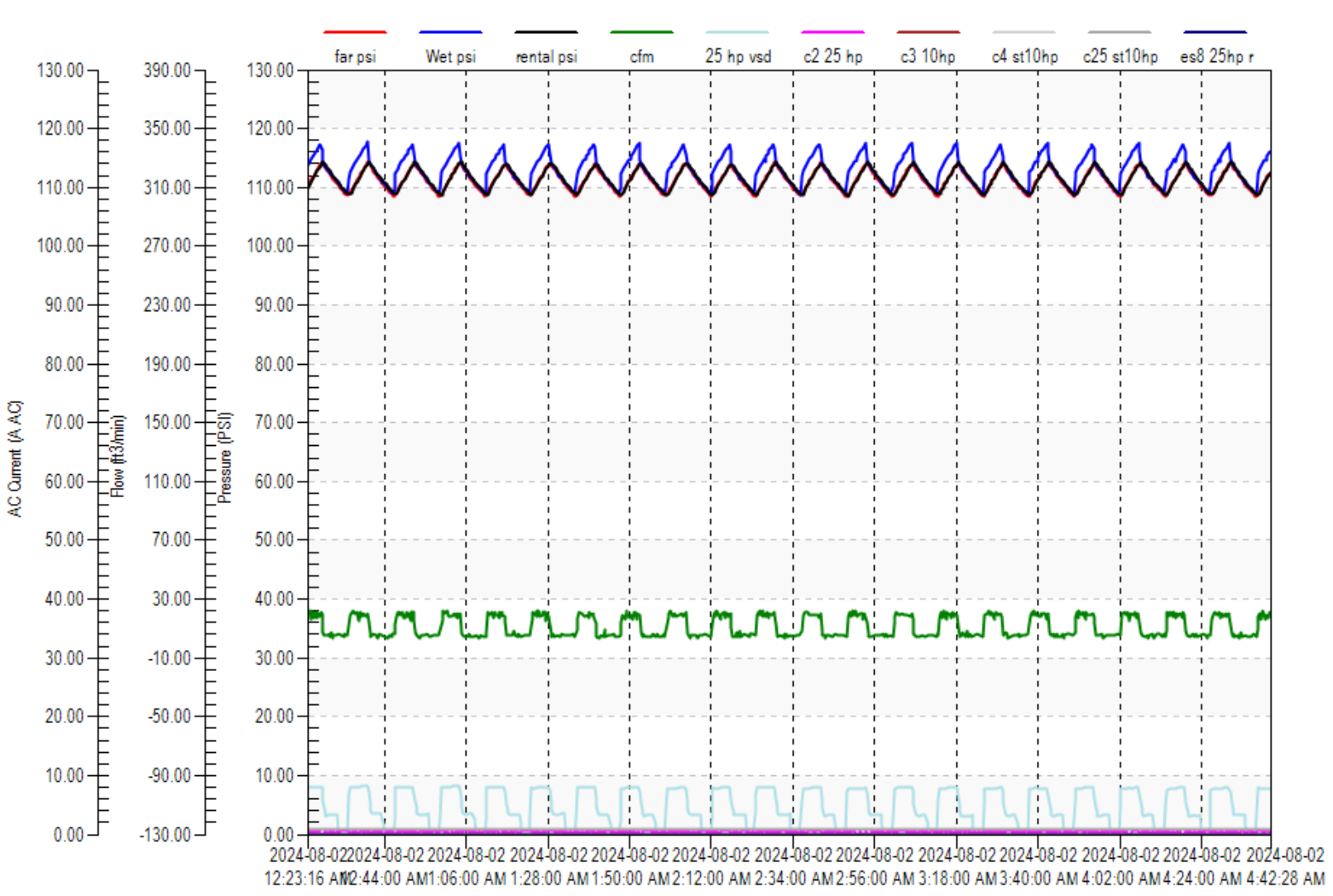In this blog post, we will discuss the first of five industrial compressor capacity control modes. The simplest method of controlling a compressor is Start/Stop mode using pressure switch control. This control simply turns on the compressor to run at full load when the pressure hits a lower pressure level — and turns off the compressor when the pressure hits a higher-pressure level. The graphic below shows a compressor operating in this mode. Because it is a lubricated screw compressor, there is a period of cooldown operation between cycles where the compressor runs unloaded (consuming power) for a set time period.

Start/stop mode (with no unloaded operation) is very efficient because the compressor operates fully loaded, the most efficient point, or stopped, consuming no power. But this mode is hard on the compressor and may result in excessive motor starts, risking motor burnout. For this reason, this mode can only be used for smaller compressors, usually under 20 hp, and typically reciprocating types. When used the pressure band is usually very wide (30 psi or more) and the storage receiver capacity large, limiting the number of motor starts to less than 10 per hour is advised.
If used on screw compressors, the storage capacity needs to be very large, limiting the start/stop frequency to no more than 4 to 6 per hour at worst case conditions (50% loading). Often a cooldown timer will run, as in the graphic, which reduces the efficiency of the compressor because there are periods when the compressor is running unloaded, consuming about 30% power but producing no air. Some modern screw compressors have adaptive control that will reduce or eliminate unloaded run time if motor starts have not been exceeded.
Start/stop control is an excellent way to operate a spare compressor that is not used often. The unit turns on only when required and turns off when it is not needed.
Once again, the five different capacity control modes for lubricated screw compressors are:
- Start/stop — simply starting and stopping the compressor using pressure switch control. Very efficient but can only be used on small compressors.
- Modulation — choking of the inlet flow of air using an inlet valve. Very inefficient at part loads.
- Load/unload — Loading and unloading a compressor using inlet valve control and sump blowdown. Moderately efficient if the compressor has access to large storage.
- Variable displacement — Opening up ports in the screw to bypass the compression element. Good efficiency if set up correctly.
- Variable speed drive — Speeding up or slowing down the compressor to vary its output flow. Most efficient operation at part load if applied properly.
In the next blog, we will discuss the modulating control mode.
Filed Under: Air Compressors, Air Preparation, Components Oil Coolers, Compressed Air Technologies, Engineering Basics, Pneumatic Tips, Technologies